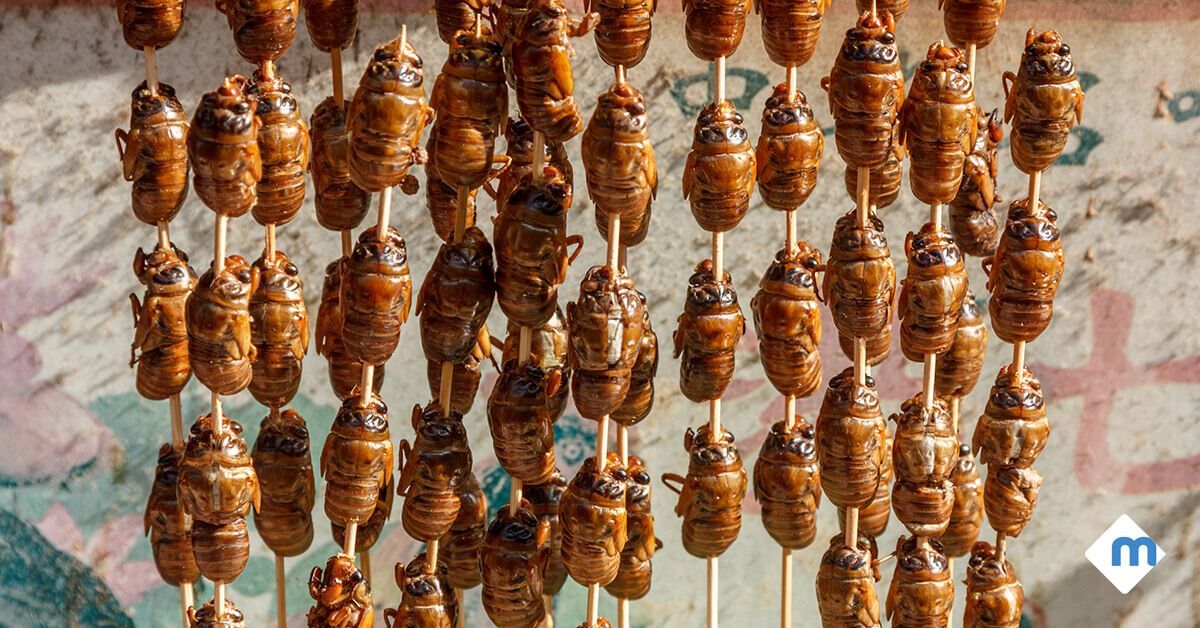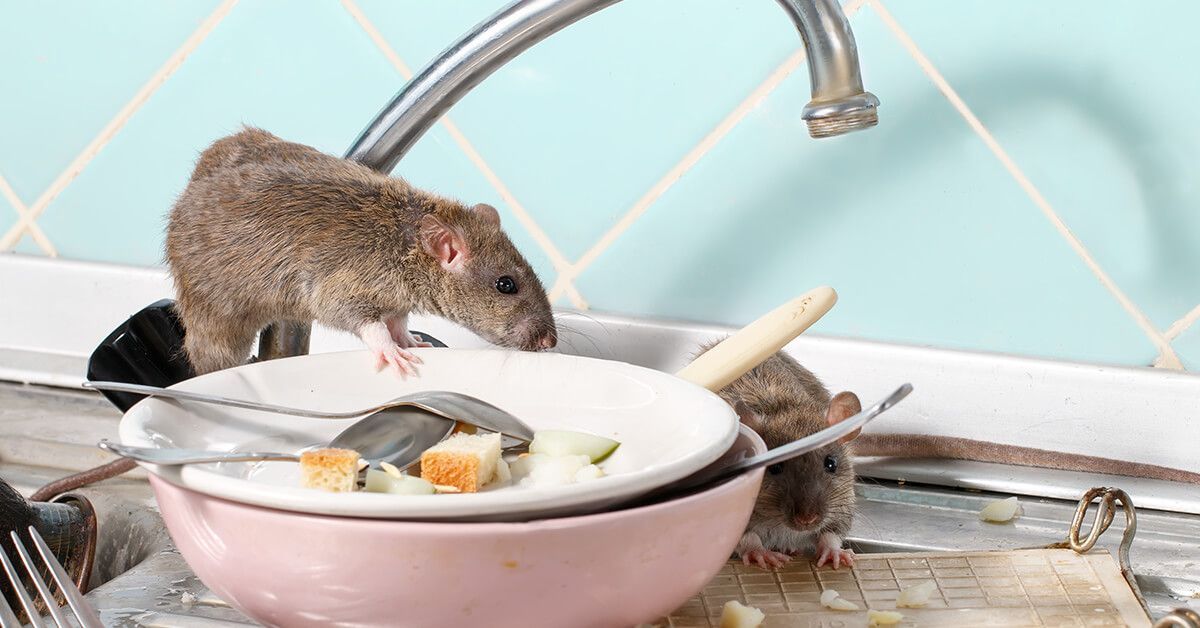Living in small colonies, termites (order Isoptera) chow down on cellulose, a common fiber found in wood, cotton, and paper. These insects can be tough to get rid of, but there are both DIY and professional services that can help.
Termites are in the scientific order Isoptera, a Greek word referring to their two sets of equally sized wings. Termites feed on wood, cellulose, and dead plant matter and are common pests in homes and wood piles all over the United States. These small insects live in colonies in a caste system. The caste system is broken down into parts that include workers, swarmers (alates), kings, and queens.
Also known by the name “white ants,” termites look similar to ants but have whitish-yellow bodies. They do not have narrow waists like ants, which is one of the things that sets them apart and makes them look different.
Termites are found all over the United States. There are several different species of termites to be aware of, including damp wood termites, higher termites, dry wood termites, and subterranean termites.
Generally speaking, termites are whitish-yellow in color. They do not have the same narrow waist segmentation as ants or wasps, instead looking more like chubby grubs. They have wings that all match in size, too.
Termites can be large , with king and queen termites reaching a little over an inch in length. It’s typical for the soldier or worker termites to be shorter than kings and queens.
TERMITES VS. CARPENTER ANTS
Termites sometimes look like ants, and people sometimes confuse termites with carpenter ants in particular (another wood-destroying pest). Here’s how to tell these two insects apart:
Usually, termites are brown, white, or black, depending on the species. Carpenter ants are reddish-black and often have lighter gray-toned stripes on their abdomen.
Termites are normally no longer than an inch, though kings and queens may be a little bit larger. Carpenter ants range from 9.5 to 13 millimeters (around a quarter to half an inch in length).
Termites live in different places depending on the species.
- Subterranean termites live underground and in soil. They build mud tubes to travel above ground. They are most commonly found in the eastern and western parts of the United States and cause significant damage to homes.
- Dampwood termites live in decaying wood. Sometimes, they also live in water-damaged wood. If you have wet wood in a garage or basement, you may find these termites there.
- Drywood termites live in dry wood and may not leave trails. They can be anywhere in your home that has dry wood.
Carpenter ants like to bore holes into wood, which means you may notice them in your walls or wooden beams. They sometimes leave behind frass, which is a kind of masticated wood. Normally this debris can’t be seen because it’s inside the hole. Carpenter ants make tunnels, and those tunnels are smooth.
WINGS
Termites have two sets of wings that are the same length as each other. Carpenter ants’ wings, however, aren’t the same size in the front and back; the front wings are longer than the rear ones.
TERMITES VS. WINGED ANTS
There are some differences between winged ants and termites, although they can look similar. Interestingly, both types of insects have wings, though termite swarmers can drop and shed theirs. By looking at them, they may appear to be more or less the same. So, how can you tell the difference?
If you’re looking right at these insects, color alone might not be enough to tell them apart. However, their shapes and the length of the wings can give a lot away about the species.
Unfortunately, many termites go unnoticed because they don’t make themselves obvious. They tunnel within beams or pieces of wood behind drywall or baseboards, so you don’t know they’re there.
There are some ways to see if you have termite activity in your home , however. Some signs include:
- Seeing termite swarmers. These flying termites may be found alive or dead in window or door frames. They may or may not have wings attached since they shed their wings during mating. If you find termite swarmers inside your home, you should be concerned about an active termite infestation unless you can be sure they came from outside.
- Finding damage. If you see wooden dust or you have holes that appear to be rough tunnels, then you could have a termite infestation. Since termites and ants both make tunnels, it’s helpful to look at the smoothness to determine what kind of pest is infesting your home. Smooth tunnels tend to be carpenter ants, while rough tunnels are more likely to be termites.
- Seeing mud shelter tubes. These tubes are created by some termite species so they can travel from place to place easily. The tubes might run up the side of your home, for example, if you have a termite infestation.
If you believe you have termites, it’s a good idea to contact our team. We can take a look at the area, and if termite activity is confirmed, we have the tools and expertise to eliminate them from your home.
Since termites cause billions of dollars of damage annually in the United States, it’s important to look for signs of them and to get rid of them when they occur in your home.
Termites come into homes most often when there is wet or damaged wood. However, drywood termites can come into homes of any kind when wood is present. They may make themselves at home without showing signs of an infestation, meaning that you could suddenly have a problem with a rafter or beam without realizing termites had been chewing away at your property.
The most common time to see swarming termites is in the spring since that is when they go on the hunt for new places to start colonies. You could find that swarms of termites approach your property but do no damage if they cannot locate a suitable habitat. Termite prevention is key not only in the spring months but also throughout the year.
If you notice termites coming out of your walls or flying insects in a basement or crawl space, it’s time to look into calling a professional pest control company. While termite swarmers won’t damage wood, their offspring will. Seeing swarmers means it is time to start remediation efforts immediately.
It’s not advisable to try to clear an infestation on your own. Termites are excellent at hiding their entry points. Since they’re so small, they don’t always cause obvious entry damage, either.
Plus, it’s important to realize that the members of the colony you see may not be all of the termites in your home. When a professional comes to take care of the issue, they will look for all access points and damage. They’ll use professional products, tools, and techniques that can get deeper into the property than many of the DIY methods, giving you better results and peace of mind.
At Local Exterminator, we know that it can be frustrating to discover that termites have been damaging your property. We’re here to help and will work with you to both eliminate active infestations and prevent new ones from occurring in the future.




